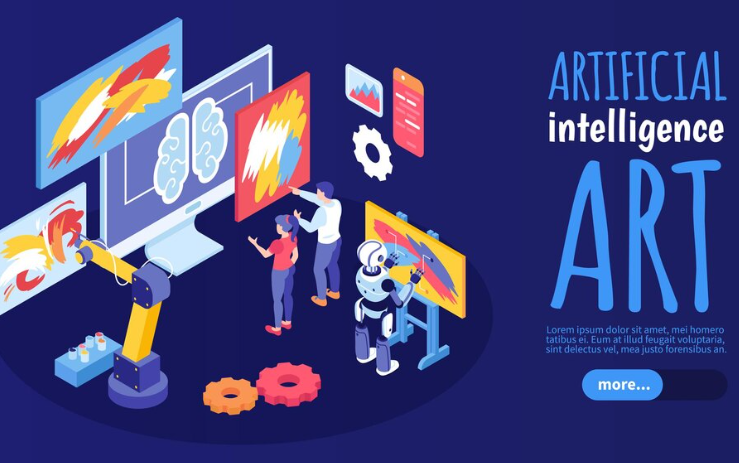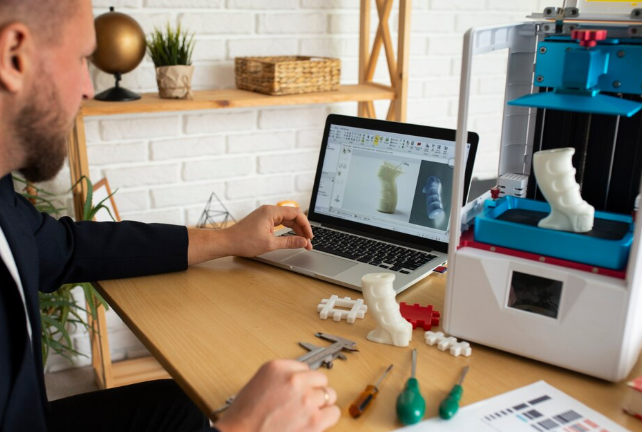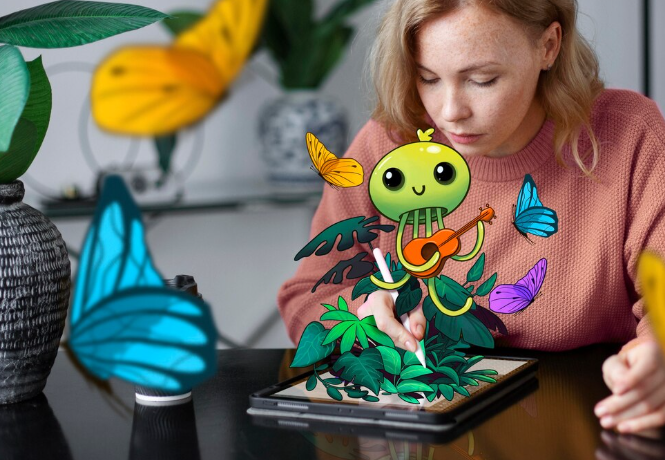Understanding Generative AI Design Tools

What are Generative AI design tools?
Generative AI design tools are software applications leveraging artificial intelligence to create original designs. Unlike traditional design software where you manually construct elements, these tools use algorithms to generate images, videos, 3D models, and even code based on your input. This input can range from text prompts describing the desired outcome (“a futuristic cityscape at sunset”) to uploaded images you wish to modify or inspire the AI. In our experience, the quality of the output heavily depends on the specificity and clarity of your prompts. A vague request will likely yield less satisfactory results.
These tools are rapidly evolving, offering diverse functionalities. For instance, some specialize in image generation, like Midjourney or DALL-E 2, while others excel at generating 3D models suitable for animation or 3D printing. A common mistake we see is underestimating the iterative nature of the process; refining the initial prompts and parameters often leads to significantly improved results. Successfully using these tools requires understanding both the strengths and limitations of the underlying AI. Experimentation is key – don’t be afraid to try different prompts and approaches to discover what works best for your design needs. Consider exploring different platforms to find the tool that best suits your workflow and creative vision.
Launch Your App Today
Ready to launch? Skip the tech stress. Describe, Build, Launch in three simple steps.
BuildHow Generative AI Design Tools Work: A Deep Dive
Generative AI design tools leverage sophisticated algorithms, primarily deep learning models like Generative Adversarial Networks (GANs) and Variational Autoencoders (VAEs), to create new designs. These models are trained on massive datasets of existing designs, learning the underlying patterns and structures. In our experience, the quality of the generated output is directly tied to the size and diversity of this training data. For example, a model trained on a vast library of architectural blueprints will produce vastly different results than one trained solely on minimalist logos.
Once trained, these models can generate novel designs based on user-provided prompts or constraints. This might involve specifying keywords like “modern minimalist logo,” providing a rough sketch, or uploading a mood board. A common mistake we see is underestimating the importance of precise input. The more specific and detailed your prompt, the more targeted and effective the generated designs will be. Consider tools like Midjourney, Dall-E 2, and Stable Diffusion which offer different approaches to input and output, highlighting the diverse methodologies within the generative AI design space. Experimentation is key to mastering the nuances of each tool and achieving optimal results.
Benefits of Using Generative AI Design Tools
Generative AI design tools offer a significant boost in efficiency and creative exploration. In our experience, designers using these tools report a substantial reduction in time spent on repetitive tasks like generating initial concepts or creating variations on a theme. This allows for more focus on higher-level design decisions and refinement, ultimately accelerating the entire design process. For example, a logo designer might use AI to quickly generate dozens of logo variations based on a single prompt, saving hours of manual work. This speed advantage is particularly beneficial for projects with tight deadlines.
Beyond speed, these tools unlock new creative avenues. A common misconception is that AI replaces human designers; however, it’s more accurate to say it acts as a powerful collaborator. By providing unexpected outputs and pushing the boundaries of conventional design thinking, generative AI encourages experimentation and helps overcome creative blocks. Consider an architect using AI to explore unconventional building structures or a product designer generating innovative solutions based on unusual material combinations – possibilities previously constrained by time or imagination are readily opened. This collaborative approach leads to more innovative and unique designs.
Generative AI vs. Traditional Design Software
Traditional design software, like Adobe Photoshop or Illustrator, requires users to meticulously craft each element. You directly manipulate pixels, vectors, and layers, demanding a high level of skill and often significant time investment. Think of designing a logo: in traditional software, you’d painstakingly adjust curves, colors, and spacing. In our experience, this iterative process, while rewarding for skilled designers, can be a steep learning curve for beginners.
Generative AI design tools, however, offer a different approach. Instead of direct manipulation, you provide prompts or parameters, and the AI generates design options based on your input. This paradigm shift means you can explore numerous variations rapidly. For example, using a generative tool, you could input “modern logo design for a coffee shop” and receive several unique, high-quality options in seconds, each subtly different. While these tools don’t replace the human designer’s expertise—final refinement and artistic direction are still crucial—they drastically accelerate the initial ideation and prototyping phases, freeing up time for focused creative problem-solving. A common mistake we see is expecting fully polished designs without further editing; think of generative AI as a powerful brainstorming partner, not a fully autonomous design engine.
Top Generative AI Design Tools: A Comparative Review

Top Tier Platforms: Comprehensive Features and Pricing
Several platforms stand out for their comprehensive feature sets and robust capabilities. Midjourney, for instance, excels in image generation offering stunning, artistic results through simple text prompts. However, its subscription-based model, starting around $10/month for limited usage, can be a barrier for some users. In our experience, Midjourney’s strength lies in its artistic flair, making it ideal for creating unique visuals, but less so for precise, commercially-oriented designs.
Alternatively, platforms like DALL-E 2 (OpenAI) provide a broader range of features including image editing and upscaling, alongside powerful image generation. While its pricing model is credit-based, offering a balance between cost and usage, we’ve found that managing credits effectively requires careful planning. A common mistake we see is users overspending on initial experimentation. Ultimately, choosing between these top-tier tools depends heavily on your specific needs and budget. Carefully consider your workflow, project requirements, and the level of control you need before committing to a specific platform.
Mid-Range Options: Balancing Features and Affordability
Several compelling generative AI design tools occupy the valuable mid-range market, offering a potent blend of features and affordability. In our experience, this segment caters well to both freelancers and small businesses needing robust capabilities without the hefty price tags of enterprise-level software. Consider tools like Simplified and Designs.ai, which boast intuitive interfaces and a respectable range of functionalities, including logo creation, image generation, and social media graphic design. A common mistake we see is underestimating the value of user-friendly design; these mid-range options excel in this area.
Choosing the right tool depends on your specific needs. For example, if you prioritize video creation capabilities alongside image generation, then Designs.ai might be a better fit than Simplified. However, if your focus is primarily on social media content and marketing assets, Simplified’s streamlined workflow and affordability could be more advantageous. Remember to carefully examine each platform’s free trial or freemium limitations before committing to a subscription. Comparing pricing models and feature sets across several mid-range options is crucial for finding the best balance for your budget and creative goals.
Best Free Generative AI Design Tools: Getting Started on a Budget
While many powerful generative AI design tools come with hefty price tags, several excellent free options exist for beginners. These tools, although often limited in features compared to their paid counterparts, provide a fantastic entry point for learning the fundamentals of AI-powered design. In our experience, starting with a free tool allows users to experiment without financial commitment, building a solid foundation before investing in premium software. A common mistake we see is jumping into expensive subscriptions without first understanding the basics.
Leveraging free options effectively requires strategic planning. For example, Lexica.art, a powerful image generation tool, offers a free tier with limitations on image resolution and generation speed. Alternatively, platforms like Craiyon (formerly DALL-E mini) provide completely free image generation, albeit with less control over the output and potentially lower image quality. Remember, these free tools often rely on community contributions and may have longer processing times. Successfully navigating these free tools involves clearly defining your design needs, understanding the limitations, and iteratively refining your prompts to achieve optimal results. Experimenting with different platforms will allow you to discover which free generative AI design tool best fits your workflow and project requirements.
Choosing the Right Tool Based on Your Needs
Selecting the optimal generative AI design tool hinges on a careful assessment of your specific project requirements and technical proficiency. In our experience, beginners often gravitate towards user-friendly platforms like Canva’s AI features, offering intuitive interfaces and a broad range of readily accessible templates. However, for more complex projects demanding fine-grained control and specialized functionalities, professional-grade options like Midjourney or DALL-E 2 may be necessary, despite their steeper learning curves. Consider the level of customization you need; some tools excel at image generation, while others prioritize video or 3D model creation.
A common mistake we see is overlooking the platform’s integration capabilities. Does it seamlessly connect with your existing design workflow? For instance, a designer heavily invested in Adobe Creative Suite might prioritize a tool with robust Adobe integration, ensuring a smooth transition between AI-generated assets and traditional design processes. Conversely, if you’re focused on web development, prioritizing tools with robust API access for programmatic generation and customization could be vital. Finally, always factor in pricing models—some offer free tiers suitable for experimentation, while others necessitate subscription fees, potentially including usage-based charges dependent on image generation speed and resolution. Carefully weigh these factors to identify the best fit for your unique needs and budget.
Hands-On Tutorial: Creating Designs with Generative AI

Step-by-step guide to Using a Popular Generative AI Design Tool
Let’s use Midjourney, a popular generative AI art tool, as our example. First, you’ll need to join their Discord server. This is where the magic happens. In our experience, navigating the server initially can feel overwhelming, but stick with it; the community is incredibly helpful. Once in, find a channel designated for new users – these are clearly marked. Then, type `/imagine` followed by your prompt. This is where the creativity shines! Be specific; instead of “a cat,” try “a photorealistic cat sitting on a windowsill, overlooking a rain-swept city at night, artstation trending, 8k resolution.” The more detail, the better the results.
Experiment with different keywords and art styles. A common mistake we see is using overly vague prompts. Midjourney offers various parameters – `–ar` (aspect ratio), `–zoom`, `–style` (e.g., `raw`, `4a`) – to further refine your image. After your prompt is sent, Midjourney generates four variations. You can then upscale your favorite image using the `U` button, or create variations from it using the `V` button. Remember to save your preferred versions! The iterative nature of Midjourney, combined with its user-friendly interface, allows for rapid prototyping and refining of designs, enabling even novice users to produce impressive results.
Tips and Tricks for Optimizing Your Designs
Refining your generative AI designs often involves iterative experimentation. In our experience, the initial output rarely matches the perfect vision. A common mistake is relying solely on the first prompt; instead, think of it as a starting point. Experiment with different phrasing, focusing on descriptive adjectives and precise keywords. For example, instead of “a futuristic city,” try “a cyberpunk metropolis with neon signs and flying cars, rendered in a photorealistic style.” This level of detail significantly impacts the generated image’s quality and fidelity.
Remember to leverage the platform’s specific features. Many tools allow for aspect ratio adjustments, style selections (e.g., Art Deco, Impressionism, photorealistic), and even seed control for reproducible results. Furthermore, consider post-processing your designs. While generative AI creates impressive base images, subtle enhancements in photo editing software can elevate your work. For instance, adjusting contrast and saturation can dramatically improve visual appeal. Don’t be afraid to combine outputs from different AI tools; one might excel at backgrounds while another masters character details. Through this iterative process and strategic utilization of available options, you can achieve truly remarkable design outcomes.
Troubleshooting Common Issues and Errors
One frequent hurdle is achieving the desired level of detail and fidelity in your generated images. In our experience, vague prompts often yield underwhelming results. Instead of simply typing “a cat,” try “a photorealistic portrait of a tabby cat, sitting on a windowsill, overlooking a bustling Parisian street, in the style of Henri de Toulouse-Lautrec.” The more specific and descriptive your prompt, the better the outcome. Experiment with different phrasing and keywords—sometimes a minor tweak can dramatically improve the result. Remember to specify aspects like lighting, texture, and composition for optimal control.
Another common issue is prompt engineering itself. A common mistake we see is expecting the AI to understand implicit context. For example, requesting “a futuristic car” without specifying stylistic elements might lead to inconsistent results across different runs. To mitigate this, always explicitly define desired features like color schemes, materials, and technological details. Furthermore, consider using negative prompts to exclude unwanted elements; for example, adding “, no wheels, no doors” might prevent the generation of unrealistic vehicles. Iterative refinement, experimenting with different prompts and parameters, is crucial for mastering the generative design process and troubleshooting effectively.
Experimenting with Different Prompts and Parameters
The power of generative AI design lies in its responsiveness to your input. Experimenting with different prompts is crucial. In our experience, starting with a simple, clear prompt—like “a minimalist logo for a coffee shop”—yields initial results. Then, iteratively refine it. Try adding adjectives to describe the style (“a minimalist *geometric* logo for a coffee shop”), the mood (“a minimalist geometric logo for a coffee shop, *rustic and warm*”), or specific elements (“a minimalist geometric logo for a coffee shop, featuring a *coffee bean*”). Don’t be afraid to be incredibly specific; the more detail you provide, the more control you have.
Beyond the prompt itself, explore parameters. Most tools offer options to adjust aspects like aspect ratio, resolution, or even the artistic style (e.g., photorealistic, impressionistic, cubist). A common mistake we see is neglecting these. For instance, specifying a 1:1 aspect ratio for a social media post versus a 16:9 ratio for a banner significantly impacts the final output. Experimenting with different styles can lead to surprising and creative results. We’ve found that adjusting the “iterations” parameter (the number of variations generated) significantly increases the likelihood of finding unexpected, yet highly relevant, design options. Remember to save successful prompts and parameters for future reference—they become valuable building blocks for your design process.
Advanced Techniques and Applications

Generating Unique Design Styles and Aesthetics
Generating truly unique design aesthetics with generative AI requires more than just inputting a prompt. In our experience, simply describing a style—like “Art Deco”—often yields generic results. Instead, focus on creating a unique stylistic blend. For instance, combine “Art Deco” with “cyberpunk” and specify a color palette of deep blues and neon pinks. Experiment with different keywords to guide the AI; “ornate,” “geometric,” “futuristic,” and “minimalist” can dramatically alter the output. Remember to iterate; refine your prompts based on the AI’s initial response.
A common mistake we see is relying solely on text prompts. Leverage image prompts and style transfer techniques. Upload reference images alongside your text prompt to influence the AI’s interpretation. For example, combine a reference image of a traditional Japanese woodblock print with a prompt describing a modern minimalist logo. This approach allows for a more nuanced level of control over the final aesthetic. Furthermore, exploring different generative AI platforms is crucial. Each algorithm has its strengths and weaknesses regarding style generation, offering unique interpretations of your prompts. Experimenting across platforms – such as Midjourney, DALL-E 2, and Stable Diffusion – will broaden your creative possibilities.
Integrating Generative AI into Your Existing Design Workflow
Seamlessly integrating generative AI into your established design workflow requires a strategic approach. In our experience, the most successful integrations treat AI as a powerful collaborator, not a replacement for human creativity. Instead of starting from scratch with an AI tool, begin by identifying specific tasks within your existing process that could benefit from AI assistance. For example, you might use AI for initial concept sketching, generating variations on a logo, or creating multiple texture options for a 3D model—tasks often time-consuming and repetitive. A common mistake we see is trying to force-fit AI into every step, leading to inefficient workflows and frustration.
Focus on iterative refinement. Begin by using AI to generate several options, then leverage your design expertise to select, edit, and polish the best results. This hybrid approach marries the speed and efficiency of AI with the nuanced judgment and creative control of a human designer. For instance, you might use AI to quickly produce several variations of a website layout, then meticulously adjust typography, spacing, and color palettes based on your branding guidelines. Remember, AI excels at accelerating certain aspects of the design process, but the human element remains crucial for achieving a polished and impactful final product.
Using Generative AI for Specific Design Tasks (Logos, Websites, etc.)
Generative AI excels at tackling specific design challenges. For logo design, tools like Midjourney or DALL-E 2 can produce numerous variations based on simple text prompts. In our experience, iterative refinement is key; start with a broad description (“a minimalist logo for a tech startup using geometric shapes”) then progressively narrow your requests based on the generated images. Remember to specify color palettes and styles for optimal results. A common mistake is using overly vague prompts, leading to unsatisfactory outputs.
Website design benefits from generative AI in several ways. Tools can generate initial layout concepts, suggesting effective UI/UX flows. While the AI won’t fully build a functional website, it can drastically speed up the initial design phase. For instance, you could prompt an AI to create “a landing page design for an e-commerce store selling handcrafted jewelry, emphasizing high-quality images and a minimalist aesthetic.” Then, you can use the generated assets as a starting point, importing them into your preferred website builder. Remember that human oversight remains critical; ensure the generated designs align with your branding and accessibility guidelines before implementation.
Commercial Use and Copyright Considerations
Using AI-generated designs commercially requires careful consideration of copyright. A common mistake we see is assuming that because the AI created the design, it’s automatically in the public domain. This is incorrect. Copyright ownership often depends on the specific terms of service of the AI tool you’re using and the inputs you provide. Some platforms retain rights to the generated output, while others grant you a license for commercial use with certain restrictions. Always review the license agreement meticulously before using any AI-generated asset commercially.
In our experience, proactively addressing copyright is crucial. For instance, if you use a prompt that incorporates elements from existing copyrighted works, the resulting AI-generated design might still infringe on those original copyrights. To mitigate this risk, ensure your prompts are original and don’t directly copy existing intellectual property. Consider obtaining clearances where necessary and consult with legal counsel if you’re unsure about the implications of a specific license. Remember that even minor modifications to a copyrighted work might not be enough to protect you from infringement. Prioritizing ethical and legal compliance is paramount for successful commercial application of generative AI designs.
The Future of Generative AI in Design
Emerging Trends and Innovations in Generative AI Design
The field of generative AI design is rapidly evolving, with several key trends shaping its future. We’re seeing a significant shift towards multimodal AI, where models can seamlessly integrate different data types, such as text, images, and 3D models, to create more complex and nuanced designs. For example, imagine inputting a textual description of a product, along with a mood board of images, to generate multiple design iterations. This surpasses the limitations of earlier tools that relied on single modalities.
Another exciting development is the increased focus on explainable AI (XAI) in generative design. In our experience, users often struggle to understand *why* a generative AI produced a specific design. XAI aims to address this by providing insights into the decision-making process of the algorithm, allowing for greater control and customization. This transparency is crucial for building trust and fostering wider adoption. Furthermore, the integration of AI-powered design collaboration tools promises to streamline workflows and enable more efficient teamwork. These tools could predict potential design conflicts early in the process, leading to faster iteration cycles and ultimately, better designs.
Potential Impact on the Design Industry
Generative AI’s impact on design is multifaceted and profound. We’re already seeing a shift from purely human-driven design processes to collaborative workflows incorporating AI. For example, architects are using AI to explore thousands of design variations for a single building, optimizing for factors like structural integrity, energy efficiency, and aesthetic appeal far beyond the capacity of a human team. This accelerates the design process dramatically, reducing timelines and costs. A common mistake we see is underestimating the role of the human designer; AI acts as a powerful tool, but the creative vision and final refinement still require human expertise.
The potential disruption extends beyond speed and efficiency. In our experience, AI tools are lowering the barrier to entry for aspiring designers. Previously complex tasks, like creating realistic 3D models or generating unique textures, are becoming increasingly accessible. This democratization could lead to a surge in new design talent and a wider range of creative output. However, ethical considerations around intellectual property and the potential for job displacement remain significant. The design industry needs to proactively address these challenges through responsible implementation and retraining initiatives to ensure a smooth transition into this new era of AI-powered creativity.
Ethical Considerations and Responsible Use of Generative AI
The rise of generative AI in design presents exciting opportunities, but also necessitates careful consideration of ethical implications. A common mistake we see is overlooking copyright and intellectual property issues. While the tools generate novel outputs, they are trained on existing datasets, potentially leading to unintentional plagiarism or infringement. Always verify the origin and licensing of any assets used as inputs, and carefully review the terms of service of your chosen generative AI platform regarding ownership rights of the generated content. In our experience, proactive due diligence is crucial to avoid legal repercussions.
Responsible use also extends to acknowledging the potential for bias in the algorithms. Generative AI models learn from data, and if that data reflects societal biases, the outputs may perpetuate harmful stereotypes. For instance, an AI trained primarily on images of white models might consistently generate designs that lack diversity. To mitigate this, actively curate diverse training datasets and critically evaluate the outputs, making conscious edits to address any biases detected. Actively promoting inclusivity and representation in your designs is not only ethically sound but also crucial for building a more equitable and innovative creative landscape.
Predictions for the future of Generative AI Design Tools
We predict a rapid expansion in the capabilities of generative AI design tools over the next few years. Expect to see significantly improved image resolution and fidelity, moving beyond current limitations in detail and texture. Furthermore, we anticipate a surge in multi-modal capabilities, allowing seamless integration of text, image, audio, and video input to generate more complex and nuanced designs. In our experience, early adopters are already experimenting with this type of interdisciplinary design, paving the way for truly groundbreaking innovations.
A common mistake we see is underestimating the impact of personalized AI design assistants. These tools will move beyond simple prompts, learning individual designer styles and preferences to offer highly tailored suggestions and automated workflows. This will dramatically increase design efficiency and allow designers to focus on higher-level creative problem-solving. Think of it like having a highly skilled junior designer, constantly learning and adapting to your specific needs, available 24/7. This level of personalization, along with increased accessibility and affordability, will democratize design and empower individuals with limited technical skills.
Resources and Further Learning

Recommended Online Courses and Tutorials
Several excellent online resources cater to diverse learning styles when mastering generative AI design tools. For beginners intimidated by the technical aspects, we recommend Coursera’s “Introduction to Generative AI,” which offers a gentle introduction to core concepts before diving into specific software. In our experience, this approach minimizes frustration and builds a solid foundation. A common mistake we see is jumping straight into advanced tools without understanding the underlying principles.
Alternatively, for those seeking hands-on experience, Skillshare’s extensive library provides numerous tutorials focusing on individual platforms like Midjourney, DALL-E 2, and Stable Diffusion. These often include project-based learning, where students create specific designs, mirroring real-world applications. We’ve found that Udemy also offers strong competition in this area, particularly for courses focusing on the commercial applications of generative AI in graphic design and 3D modeling. Remember to check reviews and course curriculums carefully to ensure alignment with your skill level and specific software interests. Consider focusing on a single platform initially to gain proficiency before branching out.
Helpful Communities and Forums
Engaging with online communities is crucial for staying updated on the rapidly evolving landscape of generative AI design tools. In our experience, forums dedicated to specific platforms like Midjourney or Stable Diffusion offer invaluable support. These communities often feature dedicated threads for troubleshooting common errors – a frequent issue being prompt engineering – and sharing innovative techniques. You’ll find users exchanging tips on optimizing parameters, exploring different art styles, and even collaborating on projects. Don’t underestimate the power of direct interaction; asking specific questions often yields faster and more effective solutions than scouring through documentation alone.
Beyond platform-specific forums, broader communities focused on AI art and digital design are equally beneficial. Reddit’s r/AIArt and similar subreddits are excellent resources for discovering new tools, exploring diverse artistic approaches, and receiving feedback on your work. A common mistake we see is neglecting these communities; many users fail to tap into the collective knowledge and experience available, hindering their progress. Remember to actively participate—sharing your own work and insights fosters a collaborative environment and accelerates your learning curve. Participation in these vibrant online spaces will not only refine your generative AI skills but also connect you with a supportive network of fellow creators.
Staying Updated on the Latest Generative AI Design tools and Trends
The rapidly evolving landscape of generative AI design necessitates continuous learning. Staying abreast of the latest tools and trends requires a multi-pronged approach. In our experience, actively engaging with online communities is crucial. Subreddits like r/generative and dedicated Discord servers often host early adopters sharing their experiences and insights on new releases and updates. Following key influencers and companies on social media platforms like Twitter and LinkedIn provides another valuable stream of information; announcements and beta access often appear here first.
Furthermore, regularly consulting industry publications and blogs is essential. Websites specializing in AI and design technology frequently publish in-depth reviews and comparisons of new tools. A common mistake we see is relying solely on marketing materials. Instead, seek out independent analyses and user feedback to gain a balanced perspective. Consider subscribing to newsletters focusing on AI in design – these curated updates save significant time and effort. Finally, don’t underestimate the power of hands-on experimentation. Many generative AI tools offer free trials or limited free access, enabling you to directly evaluate their capabilities and suitability for your needs. This direct experience often unveils hidden features and limitations not apparent in reviews.
Glossary of Key Terms
Generative AI design tools utilize various techniques, and understanding their terminology is crucial for effective use. Prompt engineering, for example, is the art of crafting effective text instructions to guide the AI. A poorly written prompt—lacking specificity or containing ambiguous phrasing—can lead to disappointing results. In our experience, iterative refinement is key; start with a basic prompt and progressively add detail based on the AI’s initial output. Think of it like sculpting – you start with a rough shape and refine it until it meets your vision.
Furthermore, terms like diffusion models and GANs (Generative Adversarial Networks) describe the underlying algorithms. Diffusion models, for instance, gradually add noise to an image and then reverse the process to generate new images. GANs, conversely, involve two networks—a generator and a discriminator—competing to create realistic outputs. Understanding these foundational models helps you choose the right tool for your specific needs; some tools might be better suited for specific tasks depending on which underlying model they employ. A common mistake we see is assuming all generative AI tools are created equal – exploring the differences is vital for maximizing results.
Launch Your App Today
Ready to launch? Skip the tech stress. Describe, Build, Launch in three simple steps.
Build




